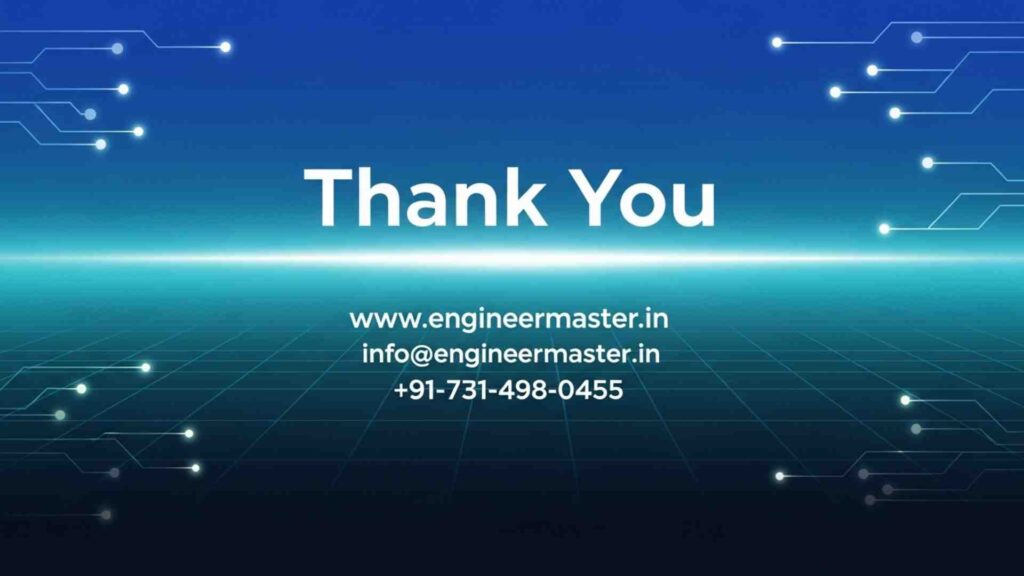Introduction
TL;DRAutomation projects promise transformational benefits yet frequently fail to deliver. Organizations invest millions only to see initiatives stall or collapse completely. Executive enthusiasm turns to disappointment as timelines stretch and costs balloon.
The statistics paint a sobering picture. Industry research shows 50-70% of automation initiatives fail to meet original objectives. Budgets exceed initial estimates by significant margins. User adoption falls far short of projections.
Common challenges in automation implementation create these disappointing outcomes repeatedly. Technical complexity overwhelms unprepared teams. Organizational resistance derails well-designed solutions. Poor planning leads to scope creep and resource depletion.
Understanding these obstacles represents the first step toward overcoming them. Successful organizations learn from failures and prepare accordingly. They anticipate problems and build mitigation strategies proactively.
This comprehensive guide explores the most frequent automation pitfalls and proven solutions. You’ll discover practical approaches that successful companies use consistently. Real-world examples demonstrate how others overcame similar obstacles. Actionable frameworks help you avoid expensive mistakes and delays.
Table of Contents
Understanding Why Automation Projects Fail
The Reality Behind Failed Initiatives
Automation failures rarely stem from single catastrophic events. Multiple small problems compound into project-killing crises. Early warning signs get ignored until recovery becomes impossible.
Leadership underestimates the complexity and effort required. Initial scope appears manageable and straightforward. Hidden dependencies emerge during implementation exposing inadequate planning. Technical debt from legacy systems creates unforeseen obstacles.
Vendor promises often exceed actual product capabilities. Marketing materials showcase ideal scenarios without mentioning limitations. Proof-of-concept success doesn’t guarantee production-scale performance. Integration challenges surface after contracts get signed.
Common challenges in automation implementation emerge from misaligned expectations across stakeholders. Business teams envision instant transformation without disruption. IT departments warn about technical constraints nobody wants to hear. End users resist changes to familiar workflows and procedures.
The High Cost of Automation Failure
Failed projects waste direct financial investments in software and services. Licensing fees deliver no value when implementations never complete. Consultant expenses accumulate without producing working solutions. Hardware purchases sit idle waiting for software that never arrives.
Opportunity costs dwarf these visible expenses dramatically. Competitors gain advantages while your organization struggles. Market share erodes as service quality stagnates. Revenue growth stalls without promised efficiency gains.
Employee morale suffers through extended periods of uncertainty and change. Teams experience change fatigue from repeated false starts. Trust in leadership diminishes after broken promises and wasted efforts. Turnover increases as frustrated talent seeks stable environments.
Customer experience deteriorates during chaotic implementation periods. Service disruptions frustrate loyal clients testing their patience. Quality issues emerge from poorly executed transitions. Brand reputation takes years to recover from implementation disasters.
Common Root Causes Across Industries
Inadequate planning causes more failures than any technical limitation. Organizations rush into implementation without thorough preparation. Current state documentation proves incomplete or inaccurate. Future state design lacks sufficient detail for execution.
Resource constraints emerge as projects progress beyond initial phases. Skilled personnel get pulled to other priorities. Budgets run out before implementations complete. Timeline pressures force compromises undermining quality.
Change management receives insufficient attention and investment. Technical solutions get prioritized over people considerations. Training programs start too late or lack adequate depth. Communication gaps leave stakeholders confused and resistant.
Integration complexity exceeds initial technical assessments. Legacy systems lack APIs enabling clean connections. Data quality issues prevent reliable automation. Performance problems emerge only under production loads.
Insufficient Planning and Preparation
The Dangers of Rushing Implementation
Organizations frequently skip critical planning steps under pressure to show results. Executives demand quick wins without understanding preparation requirements. Project teams feel compelled to move fast despite reservations.
Inadequate process documentation creates confusion during automation design. Teams base solutions on assumptions rather than facts. Critical edge cases and exceptions get discovered during testing. Rework consumes time and budget allocated for other phases.
Common challenges in automation implementation include underestimating technical requirements. Infrastructure needs surface after design gets locked in. Integration points multiply beyond initial estimates. Security requirements force architectural changes late in development.
Stakeholder alignment suffers when planning gets compressed. Different groups maintain conflicting expectations about outcomes. Success criteria remain vague enabling later disputes. Governance structures lack definition causing decision paralysis.
Building Comprehensive Project Plans
Thorough planning prevents most common implementation problems. Document current state processes in granular detail. Map all systems, data flows, and decision points. Interview process workers uncovering undocumented workarounds.
Future state design requires careful consideration of multiple factors. Business requirements drive functional specifications. Technical constraints shape feasible solutions. User experience considerations ensure adoption. Compliance needs mandate specific controls.
Risk assessment identifies potential problems before they materialize. Technical risks involve integration, performance, and security concerns. Organizational risks include resource availability and change resistance. External risks cover vendor viability and regulatory changes.
Project roadmaps provide realistic timelines with appropriate buffers. Break initiatives into manageable phases with clear deliverables. Identify dependencies between activities and external factors. Build contingency time for inevitable surprises and setbacks.
Conducting Proper Feasibility Studies
Feasibility analysis validates automation approaches before major investments. Technical feasibility confirms necessary capabilities exist or can get developed. Economic feasibility proves benefits justify costs over relevant timeframes. Operational feasibility ensures solutions work in actual business environments.
Proof-of-concept testing validates critical assumptions early. Build working prototypes demonstrating key capabilities. Test with real data under realistic conditions. Measure performance against requirements before full development.
Vendor evaluation requires rigorous assessment beyond marketing presentations. Request detailed technical documentation and architecture diagrams. Check customer references from similar implementations. Conduct hands-on testing with your actual use cases.
Total cost of ownership calculations include all expenses. Initial costs cover software licenses and implementation services. Ongoing costs include maintenance, support, and infrastructure. Hidden costs emerge from integration, training, and change management.
Data Quality and Integration Issues
Understanding Data Quality Requirements
Automation systems demand higher data quality than manual processes. Humans compensate intuitively for missing or incorrect information. Machines fail catastrophically when encountering unexpected data conditions.
Common challenges in automation implementation frequently involve inadequate data. Missing values prevent automated processing from completing. Inconsistent formats confuse parsing and validation logic. Duplicate records create processing errors and incorrect results.
Data accuracy impacts automation reliability directly. Small errors compound through automated workflows. Incorrect data drives flawed decisions and actions. Quality issues undermine user trust destroying adoption.
Timeliness requirements tighten dramatically with automation. Real-time processing needs current information. Stale data produces obsolete results and recommendations. Synchronization across systems becomes critical for consistency.
Implementing Data Governance Frameworks
Data governance establishes standards and accountability for quality. Define ownership for each critical data element. Specify quality requirements and measurement approaches. Create processes for issue detection and resolution.
Master data management consolidates authoritative sources of truth. Customer, product, and location data require single definitions. Synchronization keeps copies consistent across systems. Change management controls updates and propagation.
Validation rules enforce quality at data entry points. Format checks ensure consistency with standards. Range checks catch obviously incorrect values. Cross-field validations identify logical inconsistencies.
Data cleansing projects remediate historical quality problems. Automated tools identify duplicates and inconsistencies. Manual review resolves ambiguous cases requiring judgment. Ongoing monitoring prevents quality degradation.
Solving Complex Integration Challenges
Modern enterprises run dozens or hundreds of applications. Automation workflows must access and update information across systems. Point-to-point connections create brittle architectures that break easily.
Integration platforms provide systematic approaches to connectivity. API gateways standardize access to application functionality. Message queues enable asynchronous communication patterns. Data transformation engines convert between incompatible formats.
Common challenges in automation implementation include legacy systems lacking modern interfaces. Screen scraping provides workaround solutions with limitations. Middleware translates between old and new protocols. Cloud connectors bridge on-premises and SaaS applications.
Testing integration points requires comprehensive scenarios. Verify data flows correctly under normal conditions. Confirm error handling works when systems become unavailable. Validate performance under peak load situations.
Managing Organizational Change
Overcoming Employee Resistance
Automation threatens established routines and comfort zones. Employees fear job loss and skill obsolescence. Workers resist changes to familiar processes and tools. Resistance manifests through active opposition or passive non-adoption.
Fear drives most resistance rather than malicious intent. People worry about their ability to learn new systems. Uncertainty creates anxiety about future roles and responsibilities. Past failed initiatives breed cynicism about new proposals.
Common challenges in automation implementation stem from inadequate communication. Leadership announces decisions without explaining reasoning. Benefits get emphasized while concerns get dismissed. Updates stop after initial announcements leaving people confused.
Trust deficits between management and workers amplify resistance. Previous broken promises create skepticism about new commitments. Layoffs following earlier automation fuel fears. Lack of transparency breeds suspicion and rumors.
Building Effective Change Management Programs
Change management requires systematic planning and execution. Assessment identifies stakeholders and their concerns. Strategy defines approaches for different groups. Communication plans maintain engagement throughout implementation.
Stakeholder analysis maps influence and attitude across the organization. Champions advocate for change within their networks. Resisters require targeted engagement addressing specific concerns. Neutral parties need information helping them form positive opinions.
Communication strategies adapt messages for different audiences. Executives need strategic context and business justification. Managers require operational details and team impact information. End users want practical guidance about their daily work.
Training programs build competence and confidence systematically. Early training provides overview and context. Just-in-time training delivers skills when needed for application. Ongoing learning addresses evolving capabilities and scenarios.
Engaging Leadership and Securing Buy-In
Executive sponsorship determines change initiative success. Senior leaders provide resources and remove obstacles. Visible support signals importance to the organization. Wavering commitment undermines middle management and staff engagement.
Middle management buy-in translates strategy into operational reality. Supervisors influence team attitudes through their reactions. Managers allocate time and attention enabling participation. Resistance at this level dooms implementation regardless of executive support.
Cross-functional collaboration addresses interdependencies between departments. Process changes require coordination across organizational boundaries. Data sharing enables end-to-end workflow automation. Turf battles destroy implementations requiring cooperation.
Incentive alignment ensures stakeholders benefit from automation success. Performance metrics include adoption and results measures. Recognition programs celebrate contributions and achievements. Career development opportunities emerge from new capabilities.
Technology Selection and Implementation
Avoiding the Wrong Technology Choices
Technology selection mistakes haunt projects throughout their lifecycles. Capabilities fall short of requirements discovered during implementation. Scalability limitations emerge only under production loads. Vendor viability concerns surface after substantial investment.
Feature checklists provide incomplete vendor evaluation. Marketing materials exaggerate capabilities and ease of use. Sales demonstrations show ideal scenarios avoiding edge cases. Proof-of-concept testing lacks rigor and realistic conditions.
Common challenges in automation implementation include mismatched technology and use cases. Enterprise platforms prove overwhelming for simple needs. Point solutions lack integration capabilities for complex environments. Cloud-only offerings don’t work in regulated industries.
Total cost surprises occur from incomplete financial analysis. Hidden fees emerge for necessary features and capacity. Professional services costs vastly exceed estimates. Ongoing maintenance expenses strain budgets year after year.
Conducting Rigorous Technology Evaluation
Evaluation criteria should balance multiple important factors. Functional requirements define necessary capabilities for use cases. Technical requirements specify performance, security, and integration needs. Commercial factors include pricing, licensing, and contract terms.
Hands-on testing reveals truth beyond vendor claims. Build real workflows with actual data and scenarios. Measure performance under realistic load conditions. Verify integration with your existing systems.
Reference checking validates vendor promises and support quality. Talk with customers having similar requirements and environments. Ask about implementation challenges and ongoing issues. Inquire about vendor responsiveness and problem resolution.
Proof-of-concept projects validate critical assumptions before commitment. Test the most challenging aspects of your requirements. Include edge cases and exception scenarios. Measure quantitatively against success criteria.
Managing Implementation Complexity
Phased approaches reduce risk and complexity. Start with contained scope delivering quick value. Build capabilities incrementally learning from each phase. Scale gradually based on proven success.
Agile methodologies enable flexibility and course correction. Short iterations deliver working functionality frequently. Regular feedback ensures solutions meet actual needs. Retrospectives identify improvements for subsequent sprints.
Common challenges in automation implementation arise from inadequate testing. Unit tests verify individual component functionality. Integration tests confirm system interactions work correctly. User acceptance testing validates business requirements get met.
Production cutover requires meticulous planning and execution. Detailed runbooks specify every step and responsibility. Rollback procedures enable quick recovery from problems. Support resources stand ready for immediate issue resolution.
Measuring and Demonstrating Value
Defining Clear Success Metrics
Vague objectives enable later disputes about project success. Specific measurable targets eliminate ambiguity about achievement. Baseline measurements establish starting points for comparison. Target values specify acceptable improvement thresholds.
Financial metrics quantify bottom-line impact. Cost savings calculate expense reductions from efficiency gains. Revenue increases attribute growth to automation capabilities. ROI calculations prove investment worthiness.
Operational metrics track efficiency and quality improvements. Cycle time reductions demonstrate faster processing. Error rate decreases prove quality enhancements. Throughput increases show capacity expansion.
User satisfaction metrics gauge adoption and experience quality. System usage statistics reveal actual utilization levels. Support ticket volumes indicate problem frequency. Survey feedback captures subjective perceptions.
Tracking Benefits Realization
Common challenges in automation implementation include failure to measure actual results. Project teams move to next initiatives without validating benefits. Claimed savings never materialize in financial statements. Optimistic projections remain unverified assumptions.
Regular reporting maintains visibility into value delivery. Monthly dashboards display key performance indicators. Quarterly reviews assess progress against targets. Annual analyses calculate cumulative realized benefits.
Attribution challenges complicate benefit measurement. Multiple factors influence business outcomes simultaneously. Isolate automation impact from other concurrent changes. Statistical controls account for external variables.
Continuous monitoring ensures sustained benefits over time. Performance can degrade without ongoing attention. User workarounds creep back undermining automation. Drift from designed processes reduces effectiveness.
Communicating Results to Stakeholders
Executive audiences need concise high-level summaries. Dashboard views highlight strategic metrics and trends. Exception reporting focuses attention on issues requiring decisions. Business language avoids technical jargon.
Operational teams require detailed metrics for management. Real-time visibility enables quick issue response. Drill-down capabilities support root cause investigation. Customizable views show relevant performance dimensions.
Success stories build support for continued investment. Case studies document specific improvements and outcomes. User testimonials provide authentic voices. Visual before-and-after comparisons illustrate impact.
Scaling Beyond Initial Success
Understanding Scaling Challenges
Pilot project success doesn’t guarantee enterprise-wide triumph. Small-scale implementations receive focused attention and resources. Production environments involve complexity absent from pilots. Edge cases multiply dramatically at scale.
Common challenges in automation implementation intensify during scaling phases. Infrastructure requirements grow beyond initial capacity plans. Performance degrades under production transaction volumes. Support resources get overwhelmed by user questions.
Governance gaps emerge as automation proliferates across organization. Inconsistent approaches create technical debt and redundancy. Lack of coordination leads to conflicting automations. Security and compliance risks multiply without oversight.
Knowledge transfer proves difficult across expanding teams. Original implementers move to new projects or leave organization. Documentation proves inadequate for new team members. Institutional knowledge exists only in individual heads.
Building Scalable Automation Platforms
Platform approaches enable consistent, efficient scaling. Standardized tools and frameworks accelerate development. Reusable components eliminate redundant work. Centralized management simplifies oversight and control.
Infrastructure automation supports growing demands. Auto-scaling adjusts capacity based on load. Load balancing distributes work across resources. Monitoring provides visibility into system health.
Centers of excellence guide scaling through expertise and standards. Best practices spread across the organization. Training programs build capabilities systematically. Governance frameworks maintain quality and compliance.
Operating models clarify roles and responsibilities. Centralized teams handle complex development work. Distributed teams implement localized automations. Hybrid approaches balance expertise with local knowledge.
Maintaining Quality at Scale
Quality assurance processes must scale with automation growth. Automated testing verifies functionality continuously. Code reviews catch issues before production deployment. Security scanning identifies vulnerabilities systematically.
Performance monitoring tracks system health continuously. Real-time dashboards alert to degradation and failures. Capacity planning prevents resource exhaustion. Optimization initiatives maintain efficiency over time.
Common challenges in automation implementation include documentation decay at scale. Standards mandate comprehensive documentation. Templates ensure consistency across projects. Automated generation reduces manual effort.
Version control manages changes across growing portfolios. Release management coordinates updates and rollouts. Change approval processes prevent unauthorized modifications. Rollback capabilities enable quick recovery from problems.
Security and Compliance Considerations
Addressing Automation Security Risks
Automated systems access sensitive data and critical systems. Compromised automation capabilities create severe security incidents. Credential theft enables unauthorized access and data exfiltration. Logic flaws result in unintended actions and consequences.
Identity and access management requires careful design. Service accounts need minimum necessary privileges. Credential rotation happens regularly and automatically. Multi-factor authentication protects administrative access.
Common challenges in automation implementation involve inadequate security controls. Developers hardcode credentials in scripts and code. Logging fails to capture security-relevant events. Monitoring doesn’t detect anomalous automation behavior.
Encryption protects data throughout automated workflows. Data in transit uses TLS encryption. Data at rest employs encryption at storage level. Key management follows industry best practices.
Ensuring Regulatory Compliance
Regulated industries face strict compliance requirements. Audit trails must capture complete activity records. Segregation of duties prevents conflicts of interest. Data retention policies mandate specific storage periods.
Automation design must incorporate compliance controls. Approval workflows enforce authorization requirements. Validation rules prevent policy violations. Monitoring detects non-compliant activities.
Documentation proves compliance to auditors and regulators. Process descriptions explain how controls operate. Test results demonstrate effectiveness. Incident reports show detection and resolution.
Regular compliance assessments verify continued adherence. Internal audits identify gaps and weaknesses. External audits provide independent validation. Remediation activities address identified issues.
Building Secure Development Practices
Security considerations must integrate throughout development lifecycle. Threat modeling identifies potential attack vectors. Secure coding standards prevent common vulnerabilities. Security testing validates defenses before deployment.
Code scanning tools detect security issues automatically. Static analysis identifies vulnerabilities in source code. Dynamic testing probes running applications. Dependency scanning catches vulnerable third-party libraries.
Common challenges in automation implementation include security being afterthought. Security reviews happen early in design phase. Security requirements influence architecture decisions. Security champions embed expertise within teams.
Incident response plans prepare for security events. Detection capabilities identify breaches quickly. Containment procedures limit damage from incidents. Recovery processes restore normal operations.
Developing Long-Term Success Strategies
Creating Sustainable Operating Models
Initial implementation represents beginning rather than end. Ongoing operations require dedicated resources and processes. Support teams handle user questions and issues. Maintenance teams apply updates and fixes.
Continuous improvement drives ongoing value realization. Performance monitoring identifies optimization opportunities. User feedback highlights enhancement needs. Technology evolution enables new capabilities.
Funding models must support ongoing automation needs. Operating budgets cover maintenance and support costs. Enhancement funding enables continuous improvement. Innovation budgets explore emerging capabilities.
Talent development maintains necessary skills and capabilities. Training programs address new technologies and approaches. Career paths attract and retain automation talent. Knowledge management captures and shares expertise.
Building Automation Culture
Organizational culture determines long-term automation success. Data-driven decision making replaces gut feel. Experimentation and learning replace fear of failure. Collaboration supersedes silos and turf protection.
Leadership behaviors model desired cultural attributes. Executives demonstrate commitment through actions. Managers empower teams and remove obstacles. Staff members suggest improvements actively.
Recognition programs celebrate automation success. Innovation awards highlight creative solutions. Efficiency gains get shared broadly. Team achievements receive public acknowledgment.
Common challenges in automation implementation diminish in automation-positive cultures. Resistance decreases when change becomes normal. Adoption accelerates through peer influence. Innovation flourishes in supportive environments.
Read More:-Real Estate CRM Automation: Never Lose a Lead Again
Conclusion

Common challenges in automation implementation create predictable obstacles for unprepared organizations. Technical complexity, data quality, and integration issues derail countless projects. Organizational resistance and inadequate change management doom otherwise sound initiatives. Poor planning and unrealistic expectations set projects up for failure.
Understanding these challenges represents crucial first step toward success. Anticipation enables proactive mitigation rather than reactive crisis management. Preparation prevents most problems before they emerge. Experience from others provides valuable lessons without expensive tuition.
Successful automation requires balanced attention across multiple dimensions. Technology selection and implementation need rigor and expertise. Data quality and integration demand systematic approaches. Change management and stakeholder engagement prove as important as technical execution.
Leadership commitment sustains initiatives through inevitable difficulties. Resource allocation provides necessary capabilities and capacity. Visible support signals organizational priority and importance. Persistence through setbacks separates successful transformations from abandoned efforts.
Phased approaches reduce risk while building organizational capabilities. Quick wins generate momentum and prove value. Learning from each phase improves subsequent implementations. Gradual scaling prevents overwhelming the organization.
Common challenges in automation implementation become manageable through proper planning and execution. Comprehensive feasibility studies validate approaches before major investment. Detailed project plans guide execution and manage expectations. Risk assessment identifies potential problems enabling mitigation.
Change management receives equal priority with technical implementation. Communication maintains stakeholder awareness and engagement. Training builds competence and confidence in new capabilities. Recognition celebrates success and reinforces positive behaviors.
Measurement proves value and guides continuous improvement. Clear success metrics eliminate ambiguity about achievement. Regular tracking maintains visibility into benefits realization. Reporting communicates results to relevant stakeholders.
Your organization can achieve automation success avoiding common pitfalls. Learn from failures and successes of others. Apply proven frameworks and best practices. Invest adequately in planning, preparation, and people.
Common challenges in automation implementation test organizational resolve and capabilities. Obstacles will emerge regardless of preparation quality. Response determines whether challenges become learning opportunities or project killers. Persistence and adaptability overcome temporary setbacks.
The rewards justify the effort and investment required. Efficiency gains free resources for strategic initiatives. Quality improvements delight customers and reduce costs. Competitive advantages compound over time.
Start your next automation initiative with realistic expectations. Anticipate challenges and build mitigation strategies. Allocate sufficient resources and timeline. Engage stakeholders early and often.
Common challenges in automation implementation need not determine your project fate. Awareness enables preparation and prevention. Preparation enables effective response when issues arise. Success becomes likely rather than lucky.
Technology continues evolving with expanding capabilities. Early adopters capture advantages while others struggle. Organizational learning accelerates with each project. Automation competency becomes strategic differentiator.
Your organization’s automation journey begins with informed decision-making. Understand the challenges and prepare accordingly. Apply proven approaches and learn from experience. Transform operations while avoiding expensive mistakes.
Take action today armed with knowledge and practical strategies. Common challenges in automation implementation become surmountable obstacles rather than insurmountable barriers. Success awaits organizations combining ambition with preparation. Your transformation story can join the successful rather than cautionary examples.





